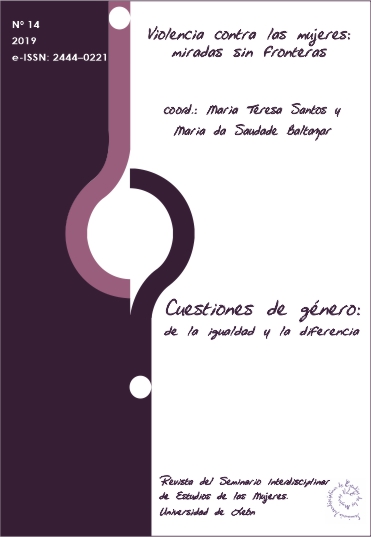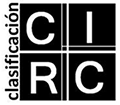Bluebeard and Domestic Violence: Telling Children or Not?
DOI:
https://doi.org/10.18002/cg.v0i14.5809Keywords:
Violence against women, children's literature, stereotypes, BluebeardAbstract
The social phenomenon of violence against women resists time with universal extension, inscribing itself in the traditional literature and relational history of humanity. The goal we propose is to show that the Bluebeard story, in Perrault's version, is not ethically neutral literary material, serving as a support to address and help discern the issue of domestic violence. However, given the force of violence that emerges in certain episodes of the tale, you wonder about the convenience of reading it to children? We can argue in favor of its critical reading, since it can lead children to recognize the problematic nature of the human relationship and question the reasons for it. The methodology is a hermeneutical one, crossing texts to reach a reasoned interpretation.
Downloads
Métricas alternativas
References
Adam Jean-Michel e Heidmann, Ute (2004): ―Des genres à la généricité. L'exemple des contes(Perrault et les Grimm). Em: Langages, 38ᵉ année, nº. 153. Les genres de la parole. pp. 62-72. Disponível em: http://www.persee.fr/doc/lgge_0458-726x_2004_num_38_153_934 [13/11/2018].
Anderson, Victoria e Pollock, Griselda (reds.) (2009): Bluebeard’s legacy Death and Secrets from Bartók to Hitchcock. London: I. B. Tauris & Co Ltd.
Araújo, Maria de Fátima (2008): Gênero e violência contra a mulher: o perigoso jogo de poder e dominação .Em: Psicologia para América Latina, nº. 14. Disponível em: http://pepsic.bvsalud.org/scielo.php?script=sci_arttext&pid=S1870-350X2008000300012 [20/11/2018].
Ariès, Philippe (1962): Centuries of Childhood. Social history of family life. New York: Alfred A. Knopf.
Bach, Rosalie (1987): L'enfance à travers les contes de Perrault‖. Em: Enfance, tome 40, nº. 12, 1987. Identités, Processus d'identification. Nominations. pp. 125-140. Disponível em: http://www.persee.fr/doc/enfan_0013-7545_1987_num_40_1_2951 [20/11/2018].
Badinter, Elisabeth (2003): L‘homme n‘est pas un ennemi à abattre. Em: L’Express, 24 avril 2003. Disponível em: http://la-cause-des-hommes.com/spip.php?article119 [10/04/2019].
Badinter, Elisabeth (2005): La vérité sur les violences conjugales. Em: L'Express, 20 juin 2005. Disponível em: http://www.philo5.com/Textesreferences/Badinter_VeriteSurLesViolencesConjugales_050620.htm [10/04/2019].
Bettelheim, Bruno (1991): Psicanálise dos contos de fadas. 4ª Ed. Lisboa: Bertrand Editora.
Bloch, R. Howard e Ferguson, Frances (1989) (eds.) : Misogyny, Misandry, and Misanthropy. Berkeley and Los Angeles. California:University of California Press.
Bortoluzzi, Michèle (1997): Perrault. Sur les traces de Ma Mère l'Oye. RouEm: BibliothèqueMunicipale de Rouen.
Breillat, Catherine (2009): Barbe Bleue. Disponível em: https://streamcomplet.xyz/barbebleue/ [27/11/2018].
Camps, Victoria (n.d.): El sentido del civismo. Disponível em: http://www.publicacions.bcn.es/b_mm/ebmm_civisme/015-021.pdf [12/04/2019].
Chagrot, Ghislaine. (n.d): Perrault et la mode des contes de fées. Disponível em: http://gallica.bnf.fr/essentiels/perrault/perrault-mode-contes-fees [16/11/2018].
Corrêa da Silva, Glauceet et al. (2005): A mulher e sua posição na sociedade: da antiguidade aos dias atuais. Em: Rev. SBPH, vol. 8, nº. 2, pp. 65-76. Disponível em: http://pepsic.bvsalud.org/scielo.php?script=sci_arttext&pid=S1516-08582005000200006 [8/11/2018].
Digilib (n.d.) La Querelle des Anciens et des Modernes. Disponível em: https://digilib.phil.muni.cz/bitstream/handle/11222.digilib/131024/Books_2010_2019_049-20141_6.pdf?sequence=1 [7/11/2018].
Favret, Jeanne e Soriano Mare (1971): Les Contes de Perrault, culture savante et traditions populaires; «Table ronde sur les Contes de Perrault». Em: Annales. Economies-SociétésCivilisations, Revue française de sociologie, vol.12, nº. 1, pp. 124-127. Disponível em: http://www.persee.fr/doc/rfsoc_0035-2969_1971_num_12_1_1958" target="_blank"> [7/11/2018].
Filho, Amílcar Torrão (2005): Uma questão de gênero: onde o masculino e o feminino secruzam. Em: Cad. Pagu, nº. 24, Campinas Jan./June, pp. 127-152. Disponível em: http://www.scielo.br/scielo.php?script=sci_arttext&pid=S010483332005000100007&lng=pt&tlng=pt [17/11/2018].
Fisas, Vicenç Armengol (1998) (ed.): El sexo de la violencia: género y cultura de la violencia. Barcelona: Icaria editorial. S.A.
Heidmann, Ute (2012): Le dialogisme intertextuel des contes des Grimm. Em: Féeries nº. 92012, mis en ligne le 15 octobre 2013. Disponível em: http://feeries.revues.org/818 [9/11/2018].
Humanium (n.d): Histoire des Droits de l‘Enfant. Disponível em: https://www.humanium.org/fr/histoire-des-droits-de-l-enfant/ [08/04/2019].
James, Laura (2012): O lobo mau no divã. 6ª Ed. Rio de Janeiro: Editora BestSeller Ltda.
Mendes, Mariza. B. T. (1999): Em busca dos contos perdidos, O significado das funções femininas nos contos de Perrault. São Paulo: Editora Unesp.
Michel, Andrée (1986): Non aux stéréotypes! Vaincre le sexisme dans les livres pour enfants et les manuels scolaires. Organisation des Nations Unies pour l'éducation, la science et la culture. Paris: Imprimerie des Presses Universitaires de France. Disponível em: https://unesdoc.unesco.org/ark:/48223/pf0000186724 [08/04/2019].
Mothe Jean-Pierre (1999): Du sang et du sexe dans les contes de Perrault. Paris: L'Harmattan.
Neemann, Harold (2002): Fairy tales and the Moderns in Classical Unities: Place, Time, Action. Em: Actes du 32e congrès annuel de la North American Society for Seventeenth-Century French Literature. Biblio 17-131. Gunter Narr Verlag: Tübingen, pp. 217-224.
Pedrosa de Andrade e Lucimary Bernabé. (n.d.): Tecendo os fios da infância. Disponível em: http://books.scielo.org/id/h8pyf/pdf/andrade-9788579830853-06.pdf [21/11/2018].
Perrault, Charles (n.d.): Barbe Bleue. Atramenta. Domaine Public. Disponível em: https://www.atramenta.net/lire/barbe-bleue/2367 [9/10/2018].
Perrault, Charles. (n.d.): Contes. Contes de ma mère l'Oye. Histoires ou contes des temps passés.Disponível em https://ebooks-bnr.com/ebooks/pdf4/perrault_contes.pdf [20/11/2018].
Perrault, Charles (n.d.): Le Siècle de Louis le Grand. Disponível em: http://gallica.bnf.fr/ark:/12148/bpt6k108214v/ [7/11/2018].
Psychological Phases Serial Killers Experience. Disponível em: http://twistedminds.creativescapism.com/psychological-disorders/disorders/phases/ [27/11/2018].
Sena, Jorge de (n.d.): Paraíso Perdido. Disponível em: http://www.lerjorgedesena.letras.ufrj.br/antologias/ficcao-e-teatro/paraiso-perdido/ [28/11/2018].
Sena, Jorge de (1986): Génesis. 2ª ed. Lisboa: Edições 70
Tatar, Maria (1987): The hard facts of the Grimms' fairy tales. Princeton: Princeton University Press.
Zipes, Jack (2006): Fairy Tales and the Art of Subversion, The Classical Genre for Children and the Process of Civilization (2ª Ed.). New York: Routledge.
Zipes, Jack (2012): The Irresistible Fairy Tale, The Cultural and Social History of a Genre. Princeton: PrincetonUniversityPress.
UNICEF (1989): A Convenção sobre os Direitos da Criança. Disponível em: https://www.unicef.pt/media/1206/0-convencao_direitos_crianca2004.pdf [20/11/2018].
Downloads
Published
How to Cite
Issue
Section
License
Copyright (c) 2019 Maria Murta

This work is licensed under a Creative Commons Attribution-NonCommercial-ShareAlike 4.0 International License.
L@s autores/as que publican en esta revista están de acuerdo con los siguientes términos:
1. L@s autores/as ceden de forma no exclusiva los derechos de explotación (reproducción, distribución, comunicación pública, transformación) a la Universidad de León, por lo que pueden establecer, por separado, acuerdos adicionales para la distribución no exclusiva de la versión de la obra publicada en la revista (por ejemplo, alojarlo en un repositorio institucional o publicarlo en un libro), con un reconocimiento de su publicación inicial en esta revista.
2. Este trabajo se encuentra bajo la Creative Commons Attribution-NonCommercial-ShareAlike 4.0 International License. Puede consultarse desde aquí la versión informativa y el texto legal de la licencia.
3. Se permite y se anima a l@s autores/as a difundir electrónicamente las versiones pre-print (versión antes de ser evaluada) y/o post-print (versión evaluada y aceptada para su publicación) de sus obras antes de su publicación, ya que favorece su circulación y difusión más temprana y con ello un posible aumento en su citación y alcance entre la comunidad académica.
Cuestiones de Género utiliza exclusivamente la licencia Atribución-NoComercial-CompartirIgual 4.0 Internacional (CC BY- NC-SA 4.0).
Bajo los siguientes términos:
- Atribución: Usted debe dar crédito de manera adecuada , brindar un enlace a la licencia, e indicar si se han realizado cambios . Puede hacerlo en cualquier forma razonable, pero no de forma tal que sugiera que usted o su uso tienen el apoyo de la licenciante.
- No Comercial: Usted no puede hacer uso del material con propósitos comerciales .
- Compartir Igual: Si remezcla, transforma o crea a partir del material, debe distribuir su contribución bajo la la misma licencia del original. cualquier uso permitido por la licencia.
No hay restricciones adicionales — No puede aplicar términos legales ni medidas tecnológicas que restrinjan legalmente a otras a hacer
L@s autores/as pueden consultar los derechos de copyright y las condiciones de autoarchivo en el directorio Dulcinea.










